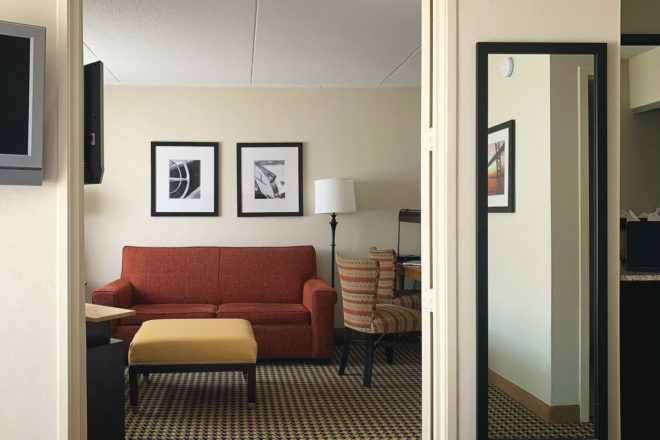Shrinkage Can Destroy Your Profits – How to Recoup

What is shrinkage when it comes to your hotel?
According to Investopedia, shrinkage is the loss of inventory. In the case of your lodging property, this deals with your room inventory.
In this article, we look at how shrinkage can destroy your profits and how to recoup. But, first, let’s really define what it is in relation to your hotel.
Defining Hotel Shrinkage
When defining shrinkage for your hotel property, we first must look at the meaning of attrition.
For example, if someone books 100 room nights with you, and you agree on an 75% attrition rate, that means the person booking the rooms must book 75 rooms. Attrition is the number of hotel rooms someone must book in a contracted hotel room block without incurring a penalty.
Attrition is the opposite of shrinkage.
Now, when it comes to shrinkage, you want to consider the allowable percentage or the number of room nights that are not booked that you allow without any penalty.
For example, if someone books 100 room nights, and the attrition rate is 75%, your shrinkage is 25%. This equates to 25 rooms.
So, how can you manage shrinkage so it doesn’t destroy your profits?
Controlling the Timeframe
By maintaining control of the overall timeframe, you can recoup your potential losses and maintain your profit margin.
Hotels generally use one of two different timeframe tools to manage room block reservations.
They include the stair-step method and the cumulative method. Oftentimes, hotels even use a combination of these methods to control shrinkage.
Let’s look at these two methods.
The Stair-Step Method
If you use the stair-step method, you write this into the contract for the room blocks. The stair-step method means you gradually reduce the overall room block total over a series of different time frames.
Doing this can help control your shrinkage and potential for losses because you are gradually releasing rooms to be booked by others.
You are better able to manage your overall inventory by reducing room blocks further out and at different time frames.
This part of your contract might read like the following. You can, of course, revise it to suit your needs:
- From the day they sign the contract to 90 days before the event: you can adjust the room block by 15% of the rooms.
- From 89 days to 60 days out, you can adjust the room block by another 5%.
- From 89 days to 30 days out, you can adjust the room block by another 5%.
- Inside the 30 days from the date of the reservations, they are responsible for paying for all rooms that are left.
Another option you can put in the control to control shrinkage is that you can drop the room block by 25% when it is up to 30 days out, and they’re on the hook for all rooms after that.
The best thing you can do is make a large enough reduction in the block so you have a chance to book those rooms to others. You want the largest reduction as the earliest choice to reduce shrinkage and maximize your profits.
The Cumulative Method
With this method, you aren’t benefiting as much as with the stair-step method.
You would use this calculation after the group checks out. First, you add up your contracted room block, and then you subtract the total number of rooms booked. This lets you see if the customer is within your allowable percentage (in the above example, it was 25%).
Your contract with the customer might include some of this verbiage:
Customer agrees to book a minimum of 100 room nights. If your group falls below that, the group is responsible for the difference between the minimum guest room nights and the real guest room nights multiplied by 75%. The group is responsible for any rooms below the 75% threshold, plus all applicable taxes.
Now, you can see that automatically you are incurring a shrinkage of any rooms beyond the 75% that don’t end up getting book. So, you can see why may lodging properties combine this method with the stair step method to reduce shrinkage as much as possible.
The best thing you can do to manage the cumulative method is encourage the group to only book the amount of rooms they honestly think they’ll use.

Controlling the Percentage
Another way you can help reduce shrinkage is to manage control over the percentage of shrinkage you’ll allow. Typical rates of attrition are between 15-20%.
But you can also negotiate a higher rate to recoup your profits, especially if the customer doesn’t seem confident in their block of rooms getting booked.
You might encourage a higher percentage of say 25-30% by telling your customer if they book the entire block, you’ll give them a 10% overall group discount on any meeting space, or that you will throw in a free meeting room.
You’ll find there are ways to reduce shrinkage by incentivizing the overall group block.
Controlling the Cut Off Dates
You can bet your customer doesn’t want to pay for any unused rooms, and this is why setting cut off dates is one of your most valuable tools for recouping profits.
Maintain control of the cut off dates and set ones that make sense to the group as well as your hotel.
Set cut off dates that not only work with the group’s deadlines but with your ability to rent unsold rooms by certain dates.
The cut off date is your most valuable asset when it comes to shrinkage. Good cut off dates force your customers to book room blocks early. This in turn means you have a better shot at filling those empty rooms.
Ultimately this is good for your customer as well as you. You’re able to fill the rooms, so they aren’t on the hook for paying for them.
To Conclude
Shrinkage is a challenge.
Your main goal is to drive occupancy. Your second goal is to make sure you set up group contracts that are built for doing that. They should protect your bottom line. (tweet this)
Use some of the tips included in this article to keep shrinkage from destroying your profits and recoup any potential losses.
We are your hotel’s digital advertising specialists. Whether it’s a new website, search engine marketing, social media marketing or website design, we are here to help. Contact us today to start a conversation about your hotel’s digital advertising needs.
Images: Priscilla Du Preez and Gary Meulemans on Unsplash
Free Hotel Website Checklist
5 Essential tips for using your website to book more guests! Plus, a Free email course, Winning Web Strategies For Innkeepers.